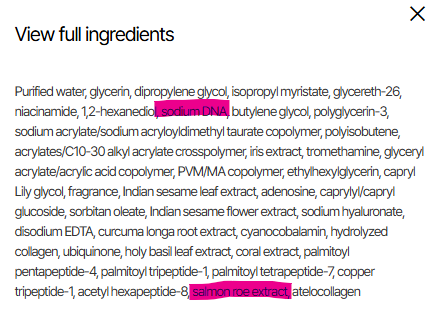
I purchased the Mediheal PDRN Pink Peptide Ampoule during a time when my skin felt noticeably tired. It looked dull and was slightly saggy around the cheeks. I had just finished a few weeks of using retinol more aggressively than usual. While my barrier wasn’t completely compromised, it definitely felt fragile. I had read about the regenerative benefits of PDRN, how it helps with elasticity and cellular turnover, and it sounded like exactly what I needed.
The ampoule made a great first impression. It came in a sleek glass bottle with a soft pink tint that gave it a touch of luxury. The dropper worked smoothly, and the consistency was pleasant. It felt silky rather than sticky, with a subtle cooling glide that made applying it enjoyable. I was ready to commit to a full cycle and genuinely hoped it would revive my skin.
But after two weeks of using it morning and night, I began to feel uncertain. There were no breakouts or obvious reactions, but something didn’t sit right. My skin didn’t feel more hydrated or firmer. There was no improvement in bounce or tone. It felt like I was using a basic hydrating serum. It was pleasant but underwhelming.
That’s when I decided to take a closer look at the ingredient list. The more I examined it, the more disappointed I became.

This ampoule is marketed as a PDRN product. Sodium DNA is not automatically the same as true PDRN. To work as PDRN, it needs to be highly purified and present in clinically effective amounts.
There's no extract concentration listed, so it's impossible to tell if a meaningful amount is actually included.
I also noticed salmon roe extract and thought it might be included as a PDRN-related ingredient. After all, salmon is the common buzzword. But after looking into it, I learned that salmon roe has no real connection to PDRN. So in reality, there isn’t a single ingredient in this formula that can accurately be called PDRN.
That realization was incredibly frustrating. I don’t expect every ampoule to be packed with 20 active ingredients. But if a product is built around a single key component, that ingredient should be present in a meaningful way. I bought this specifically for PDRN, but what I got was just a generic serum dressed up in elegant packaging.
And to make matters worse, it didn’t even perform. I gave it three full weeks. It didn’t irritate me, but it didn’t calm or replenish either. There was no radiance, no elasticity boost, and no deep hydration. My skin looked and felt exactly the same. If anything, I felt more annoyed that I had wasted three weeks on something that gave me nothing back.
The price wasn’t outrageous, but it wasn’t cheap either. It’s clearly priced as a mid to premium product. But for something that underdelivered this much and didn’t even include its headline ingredient in an effective way, it just didn’t make sense. It felt like a product designed for marketing rather than for real results.
I rarely write negative reviews. I understand that skincare is subjective and that what fails for one person may work beautifully for another. But this felt different. This felt like a formula built to impress on the outside and distract from how little it offers inside.
If you’re genuinely looking for repair or elasticity support, look for formulas that disclose exact concentrations of their actives. Look for brands that back their claims with substance, not just pretty packaging and buzzy ingredients.
This wasn’t one of those. This was all marketing, no muscle.
One line summary : Marketed for regeneration, but regenerated absolutely nothing.
 45Comments
45Comments
Sodium DNA is a broader term and may not deliver the same results